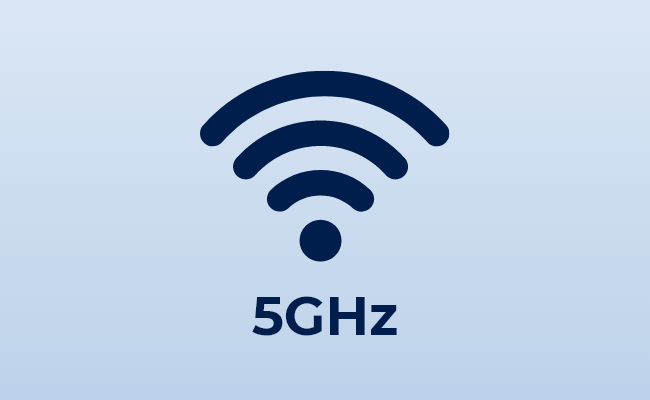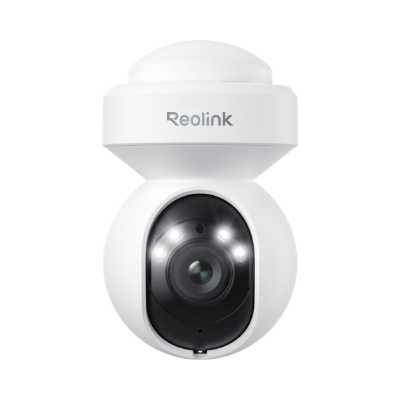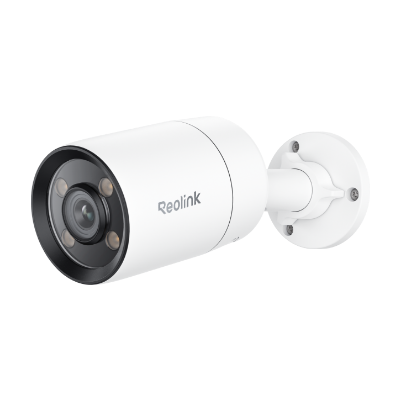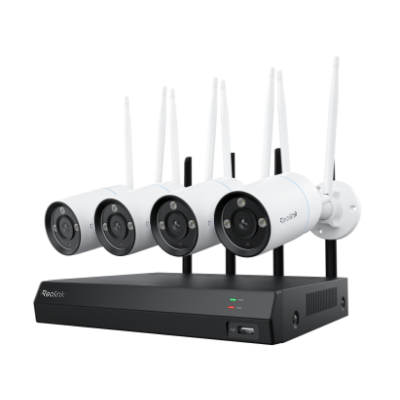The Ultimate Guide to 5 GHz Wi-Fi: Everything You Need to Know

In today's digital age, we highly rely on wireless internet connections for all fields of life. This wireless transmission of the internet is possible due to the Wi-Fi technology. When we dive deeper into the technicalities of Wi-Fi technology, there are different bands, like 2.4 GHz and 5 GHz, that have coverage, speed, and range difference. 5 GHZ Wi-Fi is relatively new in the market and in this article, we will explore all you need to know about it.
What is 5 GHz Wi-Fi?
5GHz Wi-Fi is a standard Wi-Fi networking technology that provides a 5ghgahertz frequency band. If we compare 5 GHz Wi-Fi with the traditional 2.4 GHz, there will be more non-overlapping channels available. So, 5 GHZ Wi-Fi reduces interference from other networks and wireless devices. Another benefit is that it provides faster data transfer rates. While the speed of 5 GHz Wi-Fi depends on the router available and its settings, in the best case 5GHz can support up to 1300Mbps speed.
An important thing about Wi-Fi is its range and when we consider the 5 GHZ Wi-Fi the range gets shorter due to high frequency. This range gets even shorter when it gets obstructed by obstacles like walls. The range also depends on the router and its technology. In the best case when there are no obstacles like walls, 5 GHz Wi-Fi may provide a range of 410ft.
With such qualities 5 GHz Wi-Fi with less range and high speed makes a good choice for bandwidth-intensive activities. It is great for streaming content, playing high-definition videos, playing online games, transferring large files, etc.
Pros and Cons of 5 GHz Wi-Fi
5 GHz Wi-Fi has its benefits and demerits and here is a quick overview of both aspects:
Pros
- Less open to interface
- High rate of data transfer
- Less traffic usually
Cons
- Bad at penetrating solid objects like walls
- Covers a small area (other than 802.11ac)
Best Channel for 5 GHz Wi-Fi
Optimal performance channel
Choosing the right channel for your 5 GHz Wi-Fi is important to improve its performance. Since 5 GHz has more channels than 2.4 GHz Wi-Fi, you may select the right one to reduce congestion and interference. The best channels for 5 GHz Wi-Fi include:
- 36
- 40
- 44
- 48
These channels are less likely to be used by other devices so you may get optimal performance.
Alternative channel
If you are in an area where the lower channels are crowded, then you may pick some alternative channels which include:
- 149
- 153
- 157
- 161
These are even less likely to be used by other devices.
Channel Width
5GHz Wi-Fi supports a wide range of channel widths including:
- 20 MHz
- 40 MHz
- 80 MHz
- 160 MHz
This way, users can enjoy faster speeds and higher throughput by selecting the wider channel width. 80 MHz is usually a popular choice among people for optimal performance and the best experience.
5 GHz vs 2.4 GHz Wi-Fi: What's the Difference?
2.4 and 5 GHz Wi-Fi bands come with some crucial differences between them that can impact the usage experience and applications like the following:
Frequency
2.4 GHz comes with a lower frequency range than 5 GHz, but it is also more prone to interference from other wireless devices having Bluetooth or microwave signals. 5GHz has a higher frequency range, making it immune to interferences, but it comes at the cost of less range.
Range
2.4 GHz Wi-Fi signals provide better range even when there are obstacles in the way. Meanwhile, 5 GHz already has less range and whenever there is an obstacle like a wall, the range further decreases.
Speed
5 GHz is better at offering high speeds for quick data transfers as compared to 2.4 GHz's lower data transfer speeds.
Channel overlap
2.4 GHz Wi-Fi comes with 3 non-overlapping channels while 5 GHz comes with 23 non-overlapping channels. Hence, the risk of interference in the wireless signals is much less with 5 GHz signals.
Here is a quick comparison table between the two.
When to use 2.4 GHz and 5 GHz Wi-Fi?
2.4 GHz Wi-Fi signals are better for use cases where speed does not matter a lot, but you need to cover a wider range. Web browsing, social media activities, and office tasks make good use of 2.4 GHz Wi-Fi since range is more important than speed here.
5 GHz is a better choice for use cases where you don't need to cover a long distance and you need significant performance and speed figures. It is a better choice for online gaming, video streaming, etc.
5 GHz Wi-Fi Compatible Camera
5 GHz Wi-Fi band has its set of advantages that you can enjoy by getting a compatible security camera. Here are some options that support the 5 GHz band:
Best outdoor 5ghz Wi-Fi security camera - E1 Outdoor Pro
This 4K 8MP camera is packed with advanced security features like auto-tracking and it offers 3x optical zoom as well. What makes it the best outdoor camera is its budget-friendly pricing with qualities like color night vision 355-degree pan and 50-degree tilt.
4K WiFi PTZ Camera with Auto-Tracking
4K 8MP Super HD, Smart Person/Vehicle Alerts, 355° Pan & 50° Tilt & 3X Optical Zoom, Auto Tracking, Color Night Vision.
ColorX 5GHz Wi-Fi Security Camera – CX410W
If you are looking for complete security coverage, then this security camera kit will offer you an all-in-one solution. Advanced features like object detection, 2TB HDD, 12 Channel NVR, and the clarity of 4K 8MP cameras make it the best kit for your security coverage needs.
2K PoE ColorX Night Vision Camera
2K 4MP; F1.0 Super Aperture; ColorX True Full Color Night Vision; 3000K Adjustable Warm Light; Advanced 1/1.8'' Sensor; 2-Way Audio.
5GHz Wi-Fi security camera system - RLK12-800WB4
Get true night vision even in the dimest light with this 5 GHz Wi-Fi camera. It provides 2K 4MP surveillance results with smart features like person and object detection. The camera also supports dual-band usage for the best speed and range.
4K Security Kit with Next-Gen WiFi 6
4 pcs 4K Ultra HD Security Cameras; Dual-Band WiFi 6; 2TB HDD 12-Channel NVR for 24/7 Recording; Peron/Vehicle/Animal Detection; IP67 Weatherproof.
Tips for Optimizing 5 GHz Wi-Fi Performance
Here are some quick tips to optimize your 5 GHz Wi-Fi performance:
- Position your router strategically for the least obstacles.
- Select the right channel.
- Limit interferences by keeping other wireless devices away.
- Use mesh network for covering a wider range.
FAQs
1. Is 5 GHz fast for the internet?
Yes, 5 GHz is fast for the internet as it offers better speeds as compared to the traditional 2.4 GHz Wi-Fi band. It not only offers high speeds but also has less interference making it a good choice for bandwidth-intensive tasks like video streaming, file transfer, and gaming.
2. Which device is compatible with 5 GHz Wi-Fi?
Today we have a lot of devices that are compatible with 5 GHz Wi-Fi technology. It is possible with the addition of a compatible Wi-Fi hardware adapter in those devices. Some common types of devices compatible with 5 GHz Wi-Fi include smartphones, laptops, TVs, gaming consoles, security cameras, etc.
3. Can I use both 2.4 GHz and 5 GHz Wi-Fi at the same time?
Yes, it is possible to use 2.4 GHz and 5 GHz Wi-Fi at the same time if your router supports dual-band connectivity. The benefit of this technology is that your devices will connect to the internet from the most appropriate baseband depending on their bandwidth and range requirements for optimal performance.
Conclusion
Wi-Fi technology is continuously advancing and due to all these advancements, we can enjoy high bandwidths with amazing internet performance. 5GHz Wi-Fi band makes it possible to improve internet speed but it comes at the cost of less range as compared to 2.4 GHz band. Regardless, it offers much better performance with good Wi-Fi coverage for smartphones, TVs, laptops, and most importantly security cameras.
Search
Be in the Know
Security insights & offers right into your inbox



